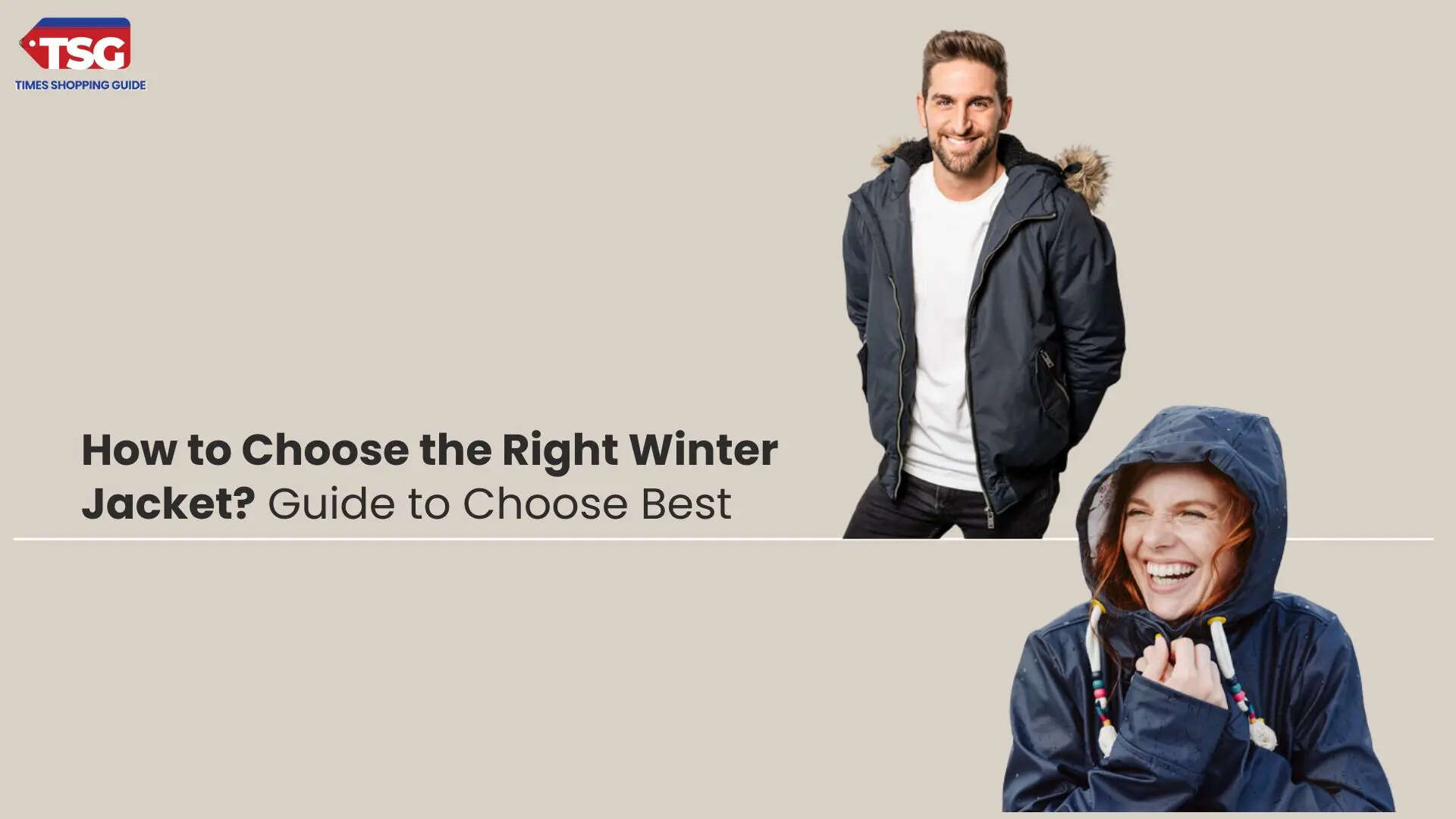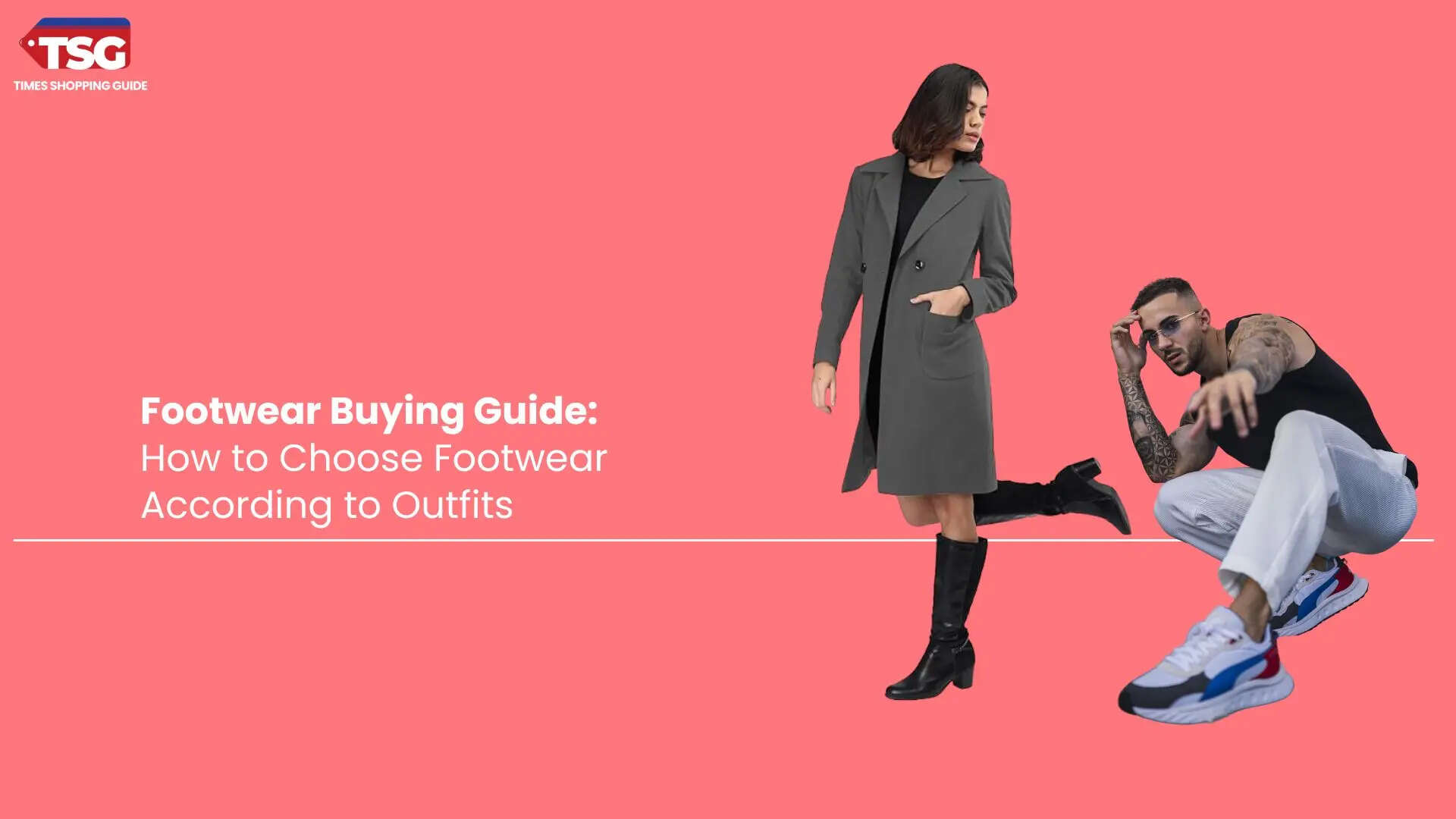- home
- fashion
- buying guides
- how to choose the right winter jacket guide to choose best
How to Choose the Right Winter Jacket? Guide to Choose Best
Choosing the right winter jacket involves considering the area's insulation, material, fit, and weather conditions. Winter jackets provide excellent warmth for extreme cold, while synthetic options are better for wet conditions. Look for waterproof or water-resistant fabrics and ensure the jacket is breathable. A good fit is key—allowing room for layering but not too bulky. Check features like adjustable hoods, cuffs, and pockets for added functionality.

This guide will help you understand what to look for in winter jackets and how to select the best one for your needs.
Also Read: Best Pashmina Shawls for Women: Vogue in Every Yarn
1. Understand the Type of Jacket You Need
The first step in choosing a winter jacket is understanding the type of jacket that will best suit your needs. Winter jackets come in many styles, each designed for specific conditions and activities. Here are some common types:Down Jackets
Winter coats are filled with the soft under feathers of ducks or geese. They offer an excellent warmth-to-weight ratio, making them incredibly warm yet lightweight. Down jackets are best suited for dry, cold conditions but can lose their insulating properties when wet. Many high-quality down jackets come with water-resistant or waterproof shells to help mitigate this issue.
Synthetic Jackets
Synthetic winter jackets are filled with man-made materials such as polyester. They are a great alternative to down jackets, providing warmth even when wet. While they tend to be bulkier than down jackets, they are usually more affordable and easier to care for. Synthetic jackets are ideal for wet or snowy conditions and are also a good choice for those with allergies to down feathers.
Puffer Jackets
Puffer jackets are typically filled with down or synthetic insulation and are designed to trap warmth in their quilted sections. These versatile winter coats come in various styles, from casual to performance-oriented. They are perfect for everyday winter wear, offering warmth, style, and comfort.
Read This: 6 Best Puffer Jackets for Men
Parkas
Parkas are long winter jackets, often extending to the thighs or knees, providing extra warmth and coverage. They are typically filled with down or synthetic insulation and feature fur-lined hoods for additional protection against the cold. Parkas are well-suited for extremely cold climates, especially those with heavy wind and snow.
Softshell and Hardshell Jackets
Softshell winter jackets are lightweight, breathable, and water-resistant, making them ideal for hiking, skiing, or running in milder winter conditions. Hardshell jackets, however, are designed to be fully waterproof and provide superior protection against wind and rain. They are best for wet and windy conditions, offering durability and protection while remaining breathable during intense physical activity.
Technical Jackets
These jackets are designed for specific skiing, snowboarding, or mountaineering activities. Technical jackets are typically built with advanced materials and features like ventilation zippers, reinforced areas, and helmet-compatible hoods. They are ideal for individuals who engage in outdoor sports and need a high-performance jacket for protection in extreme weather.
Read More: 6 Best Kids' Winter Caps to Keep Your Little One Warm & Cozy
2. Consider the Insulation
The insulation in your winter jacket is one of the most important factors in determining its warmth. There are two main types of insulation: down and synthetic.Down Insulation
Down insulation is highly regarded for its warmth-to-weight ratio. It provides excellent insulation in cold, dry conditions by trapping heat in the air pockets of the down feathers. The more down a jacket has, the warmer it will be, and the higher the fill power, the better the jacket's ability to retain warmth. Fill power typically ranges from 500 to 900, with higher numbers indicating better insulation.
However, down can lose its insulating properties if it becomes wet. For this reason, if you live in an area with wet or snowy conditions, look for winter jackets with water-resistant coatings or hybrid designs that combine with synthetic insulation.
Also This: Best Winter Kurtis for Women: Feel Warmth and Up Your Style Quotient
Synthetic Insulation
Synthetic insulation is made from man-made fibres and is designed to mimic the insulating properties of down. It is generally heavier and bulkier than down but has the advantage of performing better in wet conditions. Synthetic insulation retains heat even when wet, making it a great choice for environments where rain or snow might occur.
While synthetic winter coats may not pack down as small as down jackets, they are more affordable, easier to care for, and better suited for wet weather.
3. Choose the Right Material for the Outer Shell
The outer shell of winter jackets protects you from the elements. It is the first defence against wind, snow, and rain, so it should be made from durable, water-resistant, and windproof materials. There are several options to consider:Waterproof vs. Water-Resistant
Water-resistant jackets can handle light rain or snow but are unsuitable for prolonged wet exposure. Waterproof jackets, on the other hand, offer full protection against rain, snow, and wet conditions. If you expect to be exposed to significant moisture during heavy snowfall or rain, look for a jacket with a waterproof membrane like Gore-Tex or eVent.
Looking for 6 Best Body Warmer Sets for Women? Click Here.
Windproof
Windproof winter coats block the wind and prevent heat from escaping your body. Look for jackets made from materials with windproof coatings or fabrics, like ripstop nylon or polyester. A jacket that combines windproof and waterproof properties will provide maximum protection against the elements.
Breathability
Breathability is important, especially if you plan on engaging in physical activities like hiking, skiing, or snowboarding. Jackets with breathable fabrics or ventilation systems (like underarm zippers) allow moisture to escape, preventing you from getting sweaty and chilled. Look for winter jackets with breathable membranes, such as Gore-Tex or similar technologies, which help balance warmth with ventilation.
4. Fit and Comfort
The fit of your jacket is essential to both warmth and comfort. A good winter jacket should allow layering underneath without being too bulky or restrictive.Read This: 6 Best Puffer Jackets for Women
Layering
Layering is key to staying warm in the winter. You should be able to wear a base layer and mid-layer (like a fleece or sweater) underneath your jacket without feeling cramped. Look for jackets with adjustable features like cuffs, waistbands, and hoods to customize the fit and keep out drafts.
Freedom of Movement
Your jacket should allow you to move comfortably, especially if you plan on engaging in outdoor activities. A jacket with articulated sleeves, stretchy panels, or a more relaxed fit will give you more freedom of movement. Consider trying on the jacket with a base and mid-layer to ensure you can move comfortably in all directions.
Length
Another factor to consider is the length of your jacket. Long winter jackets like parkas provide extra warmth and coverage, especially in windy conditions. Shorter jackets, such as puffer jackets, are more versatile for everyday wear but may provide less protection in extreme cold.
Also Read: Best Winter Boots for Kids: Unleash Your Little’s Style
5. Additional Features
Winter jackets have additional features that enhance functionality, convenience, and comfort. Some of the most important features to look for include:Hood
A hood is essential for protecting your head and neck from the cold. Look for an adjustable, insulated jacket, and, ideally, a removable hood. Some winter coats also feature hoods with faux fur trim, which can help break the wind and add extra warmth.
Pockets
Pockets are crucial for carrying your essentials and keeping your hands warm. Look for a jacket with several pockets, including internal and external ones for storage. Some jackets even feature specialized pockets for phones, goggles, or ski passes.
Look This: 6 Best Winter Ear Muffs for Kids
Cuffs and Waistband
Adjustable cuffs and waistbands help seal out cold air and prevent drafts. Look for cuffs with Velcro or elastic that can be tightened to prevent snow from entering. A drawstring waistband can also help trap warmth around your torso.
Ventilation
You’ll want a jacket with ventilation zippers or mesh-lined vents for active winter sports or hiking. These features allow you to regulate your body temperature during high-intensity activities by releasing excess heat and moisture.
Reflective Elements
If you plan on being outdoors in low-light conditions, consider a jacket with reflective details. These elements can increase visibility and help keep you safe when walking or skiing at night or in bad weather.
6. Climate Considerations
Finally, consider the climate and conditions where you’ll be wearing the winter jacket. A down jacket might be the best for warmth and packability if you live in extremely cold and dry temperatures. On the other hand, if you live in a wetter, snowier climate, a synthetic jacket with a waterproof shell may be more suitable.Read Here: 6 Best Leg Warmers for Women
If you’re engaging in winter sports, a technical jacket designed for specific activities like skiing or snowboarding will offer the necessary performance features. A versatile puffer or parka will provide warmth and style for everyday wear.
7. Budget Considerations
Winter jackets come in various price points, from budget-friendly to high-end performance. While it’s tempting to go for the cheapest option, remember that a good winter jacket is an investment in your comfort and safety during the colder months. High-quality jackets with advanced insulation, waterproof membranes, and durable materials will last longer and provide better protection from the elements.Also This: Best Winter Boots for Men: Combination of Quality and Style
When shopping for a winter jacket, balance your budget with your needs and desired features. Remember that a jacket is an investment, so spending a little extra on a high-quality option can save you money in the long run by ensuring better performance and durability.
FAQs
1. How do I find the perfect winter jacket?
When choosing the best winter jacket, consider your purpose, material, weather condition, budget, and style.
2. Which type of jacket is best for winter?
For fall and light winters, you can opt for a denim jacket, a bomber jacket, or a zipper jacket.
3. How do you choose a winter jacket size?
Raise your arms above your head and stretch your torso to see how long it is. A jacket that rides past your waistband is probably too short and can expose your midsection to the cold. If raising your hands causes the front of the jacket to billow out, it's probably too big.
Disclaimer: Times Shopping Guide is committed to bringing you the latest products from the best brands. Our selection is based on market research and positive consumer feedback. Times Shopping Guide is also a part of an affiliate partnership. In line with this, we may receive a portion of the revenue from your purchases. Please note that the product prices are subject to change based on the retailer's deals.








